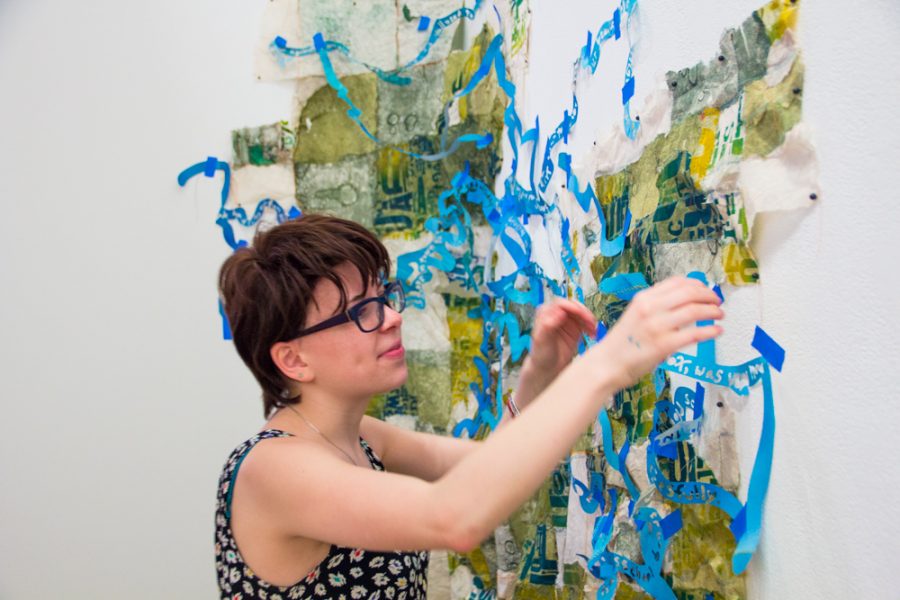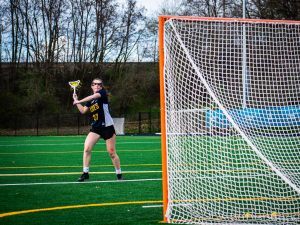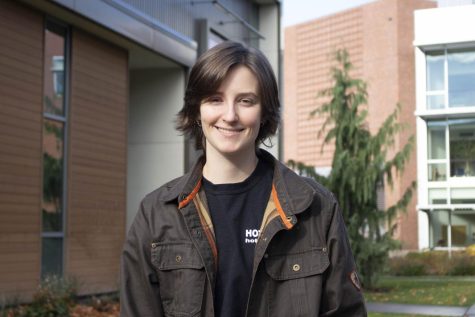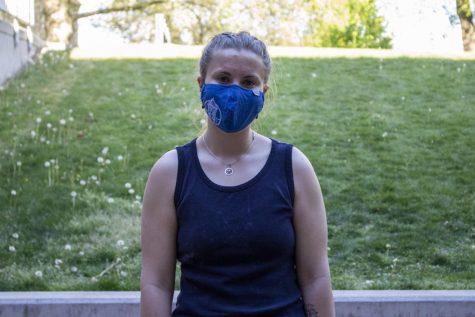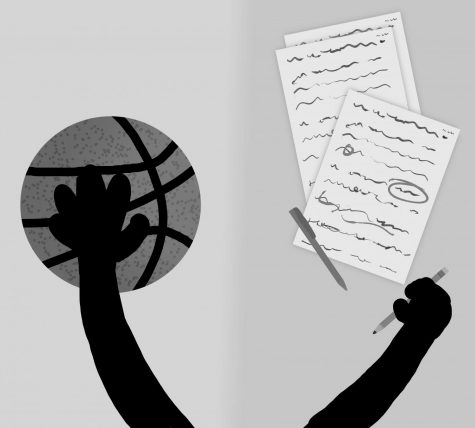Senior artists prepare theses
The senior art majors’ individual art projects will be presented in Sheehan Gallery starting on April 22, to be seen by the public and critiqued by the art department.
April 21, 2016
The senior art majors’ individual art projects will be presented in Sheehan Gallery starting on April 22, to be seen by the public and critiqued by the art department. Seniors studying everything from birds to bilateral symmetry and bodies to objectivity, share their insight into the artistic process and the challenges posed by conveying complex messages to the audience.
Asa Mease
Asa Mease, Biology-Art double major, drew inspiration for his project “Familiar Birds of the Pacific Northwest” from fond memories of childhood when he would go birding. For him, birding evokes fond memories of simply being in nature and appreciating the birds of the Pacific Northwest. For his project, he has been collecting representations of common birds of the Pacific Northwest online and in shops. His studio is lined with shelves of representations of birds in every imaginable form: figurines, films, logos, books, paintings and more. He believes this speaks to a larger truth about society today.
“Nature and natural species and animals have become consumable products. As we have divorced ourselves from actual interactions with animals, we have inundated ourselves with symbolic representations: sports teams, businesses, Tchotchkes, alcohol brands. We have surrounded ourselves with an abstract concept of nature.”
Collecting, it turns out, is a more expensive hobby than anticipated. Luckily, Mease has used his creativity to defray the costs in the most fitting way possible–through art.
“I’ve been making a gift shop of items. Collecting has been more expensive than expected … I’ve been making these soy-based candles modeled after this duck figurine which then get packaged in these little boxes. I also have T-shirts.”
For Mease, the project is simply the continuation of a longstanding passion for art and nature.
“I have realized the ongoing nature of my interest in art production. I don’t see it as a culmination or anything of that sort. But rather just a continuation of projects.”

Katrina Allick
Katrina Allick’s individual project stems from a deeply personal place: her body.
“A big part of art is making yourself vulnerable. My body is such an intimate thing for myself. But in order to show your consciousness and skill set you need to cross a boundary that makes you uncomfortable. But I think in order to address uncomfortable topics, you need to make yourself uncomfortable or else you’re coming from a really privileged place. I think I’ve learned to be vulnerable, open with my body and allow myself to be weird and talk about it.”
She believes starting conversations about aspects of identity that many shy away from is crucial. She addresses everything from gender and sexual orientation to body size. She is particularly interested in what these mean in the context of our society and how one “performs” their identity.
“I started looking at the philosophies of Judith Butler who focuses on how we perform our identities. I was really interested in how I perform my gender as a woman, but also as a queer woman and how being a larger bodied woman implicated the way I moved through space … Any aspect of your identity is only a performance–how you dress, your mannerisms–all of it is a result of societal pressure going into your subconscious.”
Her art falls into “New Genre,” a form of art based on repurposing. She is not restricted by any single media form. She uses video, photoshop, laser cutter, 3D printer and live performance to create a one-of-a-kind experience for the audience.
Projections of GIFs will line the walls of “interesting body movements, such as bending down, pulling up my pants. Then I have been photo shopping them and adding pop colored backgrounds. It is like making my own choreography out of the videos.”
In addition, Allick’s studio is filled to the brim with ambiguous props: a pile of packing peanuts, concept maps drawn in Sharpie on the walls and a toilet. She can’t reveal what the live performance entails; it is a surprise.
Though you never know where Allick’s performance is going to take you, her message is clear:
“The more you bring your personality from your art to the real world, the more you realize there doesn’t have to be this boundary between art and real life. I want to share my lived experience. I am trying to show [that] you can have agency in the way that you present yourself. Even though there are all these implications that people place on woman that are queer or have a larger body type, you can still take agency–it is your choice of how you perform yourself, not society’s.”

Ali Holmes
A Sociology-Art double major, Ali Holmes’ project is entitled “An Incomplete History of Milton-Freewater.” On the floor and pinned to the walls of her studio are bits of handmade paper sewn together that have been screen-printed. She also has created a map of Milton-Freewater by taking individual screenshots from Google Maps and then photo shopping them all together. This is what she refers to as she recreates the map from her individually created pieces of paper.
“I sent out a survey to get the voices of people who actually live in Milton-Freewater, to give more agency and exposure to the people who live there. I want their voices to be heard. I want to deconstruct the narrative that mapping has had historically.”
She drew together her passion for art, social change and Milton-Freewater to create a project with a statement.
“I’ve been working in Milton-Freewater for the past year. It is a little tiny town that is somewhat impoverished, but I’ve just loved getting to know the people there. They are working to revitalize their town, so I thought, ‘How can I involve art in this?’”
Her work plays a lot with concepts of power and objectivity versus subjectivity.
“Images have the power to shape how we view places or people. As a cartographer even, it is not necessarily objective. When we see an image, I want to show people that even that is subjective.”
Above all, community-based work is really important to Holmes, who is striving to involve art in the fight for social justice.
“Art can be more than painting on a wall. People can often think of art as just something that is pretty. It is so much more than that. I want to open up the cannon as to what art is, what art can be and what art can do for society. This is an emerging field called ‘Socially Engaged Art,’ which is what I am really interested it,” Holmes said.
Cody Burchfield
Art major Cody Burchfield uses digital video pieces to investigate symmetry and bilateral symmetry; he focuses specifically the relationship between the the organic and the digital world.
“I have a love/hate relationship with digital media. If I could, I would just transport viewers to a mountaintop or something like that—just something more physical. At the same time, digital media is very relevant for this generation. By using it, I am attempting to convey that we are constantly in an interchange between the real and the digital world.”
Burchfield’s inspiration for his project delves even deeper into the effect and connection that human minds have with bilateral symmetry.
“I drew inspiration from the Rorchach effect, the man who created the inkblot test, which are psychological gauges of personality and mental processes. He was creating content with bilateral symmetry that the mind was programmed to recognize something within.”
This phenomenon can be seen even in the everyday, according to Burchfield.
“If you take a picture of a flower, for example, and you flip it, you’ll start to recognize faces or animals. It is an image that is sort of like a Rorchach ink blot test, which is really interesting because no matter who I talk to they always say they get something different from it.”
Sometimes, the biggest struggle is simply defining and solidifying a singular message to convey. For Burchfield, the implications of his project are so expansive that this has been the most challenging aspect of the process:
“It has been in constant flux of what I am trying to present. I have learned a lot about attempting to create simplicity and to try to tone it back to find one thing to say as opposed to 29.”



